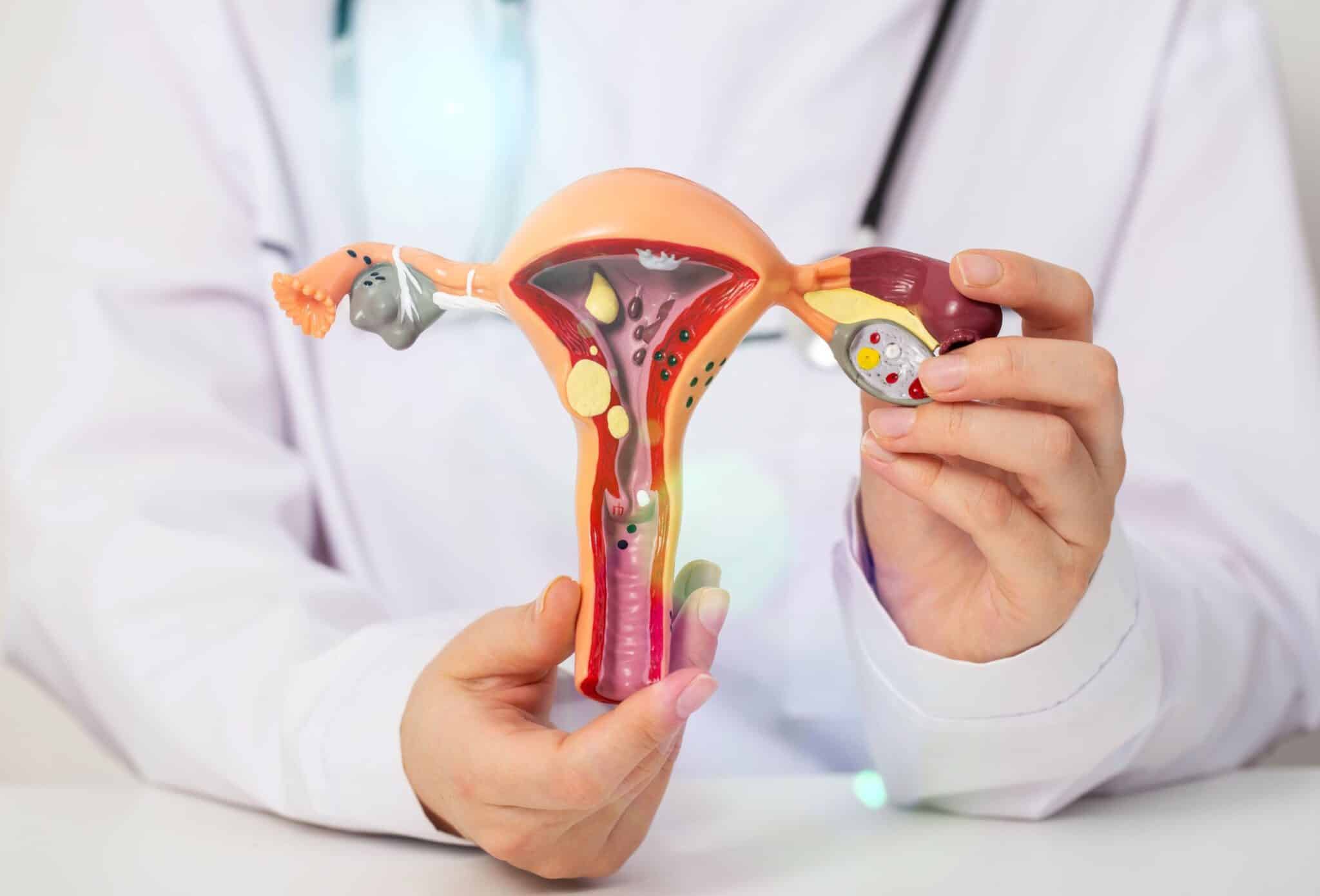Complex ovarian cysts are fluid-filled sacs that develop on or within the ovaries, containing solid and liquid components. Unlike simple cysts, which often resolve on their own, complex ovarian cysts may require medical evaluation due to their potential to cause complications. Understanding their causes, symptoms, and management strategies is crucial for maintaining reproductive health.
Read on to learn more.
Causes of Complex Ovarian Cysts
The development of complex ovarian cysts stems from multiple interrelated factors. For example, hormonal dysregulation, especially imbalances between estrogen and progesterone levels, serves as a primary catalyst by disrupting normal ovarian follicle development. Underlying gynecological and other medical conditions can also significantly elevate risk—PCOS creates an environment of chronic anovulation and multiple follicular cysts. At the same time, endometriosis may lead to endometriomas (“chocolate cysts”) containing thick, old blood.
Furthermore, pregnancy introduces unique hormonal shifts that can transform temporary structures like corpus luteum cysts into complex forms when they fail to regress properly, instead filling with blood or growing abnormally. Other contributors can include pelvic inflammatory disease-causing adhesions, genetic predispositions affecting cell growth regulation, and lifestyle factors like obesity which exacerbates hormonal imbalances through excess estrogen production in adipose tissue.
Pelvic infections or a history of ovarian cysts can also elevate the risk factors. In rare cases, complex cysts may indicate ovarian cancer, especially in postmenopausal women. Genetic predispositions and lifestyle factors, including obesity and smoking, may further influence cyst formation.
However, for those diagnosed with persistent or symptomatic cysts, seeking professional care for a treatment for ovarian cyst is essential. These treatment options may involve medication, hormonal therapy, or surgical intervention, depending on the cyst’s characteristics.
Symptoms and Diagnosis
Many complex types of cysts cause no noticeable symptoms and are often discovered accidentally during routine pelvic examinations, ultrasound scans, or other imaging studies. When symptoms do appear, they can range from mild discomfort to severe pain, including the following:
One-sided pelvic pain or a persistent dull ache may signal a complex ovarian cyst, often worsening during menstrual period or physical activity.
- Persistent bloating or unexplained abdominal swelling may indicate a complex ovarian cyst, especially if accompanied by pelvic discomfort or digestive changes.
- Irregular periods—unpredictable timing, unusually heavy/light flow, or missed cycles—may indicate hormonal imbalances linked to ovarian cysts or PCOS complications.
- Deep pain during sex or bowel movements may signal pressure from an ovarian cyst, endometriosis, or pelvic inflammation requiring evaluation.
- A large ovarian cyst can press on the bladder, causing urgent or frequent urination even with minimal urine accumulation.
Symptomatic cysts may indicate complications requiring medical evaluation. As such, diagnosis begins with a transvaginal or pelvic ultrasound, which visualizes the cyst’s structure—differentiating fluid-filled simple cysts from complex, larger cysts with solid components. For unclear cases, MRI also offers detailed soft-tissue imaging, while CT scans evaluate potential spread. In postmenopausal women or suspicious cases, CA-125 blood tests can screen for ovarian cancer markers, guiding further management decisions.
Management and Treatment Options
Complex ovarian cysts require tailored approaches based on size, symptoms, and potential risks. Treatment ranges from the following:
Watchful Waiting
Small, asymptomatic ovarian cysts typically resolve on their own without intervention. A healthcare provider advises a “watchful waiting” approach, scheduling follow-up ultrasounds every few months to monitor growth or structural changes. If the cyst remains stable or shrinks, no further form of treatment is needed. However, if it enlarges or causes symptoms, additional evaluation may be required. This conservative method can avoid unnecessary procedures while ensuring timely intervention if complications arise.
Medication and Hormonal Therapy
Hormonal birth control pills suppress ovulation, reducing the formation of new cysts by preventing follicle development. While they don’t eliminate existing cysts, they can help manage conditions like PCOS. NSAIDs (e.g., ibuprofen) can also relieve sharp pain and inflammation but don’t affect cyst size. These treatments are often combined with monitoring for optimal cyst management.
Surgical Intervention
When complex ovarian cysts are large, persistent, or show concerning features, surgical intervention may be recommended. Laparoscopic cystectomy—a minimally invasive procedure—allows for precise removal while protecting fertility. However, an oophorectomy may be necessary if malignancy is suspected or the cyst causes severe damage. Surgical decisions can depend on factors like age, symptoms, and risk of cancer.
Lifestyle Modifications
Lifestyle adjustments play a key role in preventing ovarian cyst recurrence. Excess weight and chronic stress can disrupt hormones, while high caffeine or alcohol intake may worsen imbalances. Eating antioxidant-rich fruits, vegetables, and fiber can also help regulate estrogen levels. For individuals who smoke, quitting is another meaningful step. Support options include prescription treatments like Champix, which can aid cessation as part of a holistic approach to health and is widely available for purchase. These habits, combined with regular exercise, can promote overall reproductive health and may lower cyst risks naturally.
When to Seek Medical Attention

Sudden, intense pelvic pain—especially with fever, nausea, or vomiting—may indicate ovarian torsion, cyst rupture, or infection, requiring urgent medical attention. These emergencies can compromise menstrual blood flow to the entire ovary, risking tissue death or infertility if untreated.
Prompt evaluation with diagnostic examinations, pelvic imaging tests and surgery, if needed, preserves fertility and prevents life-threatening complications like internal bleeding or sepsis.
Final Thoughts
Complex ovarian cysts arise from hormonal, genetic, and lifestyle factors. While many are benign, proper diagnosis and management are crucial. Regular gynecological check-ups and prompt medical attention for concerning symptoms ensure optimal reproductive health. By keeping the information mentioned above in mind, individuals can understand how to manage ovarian cysts and their causes.
















